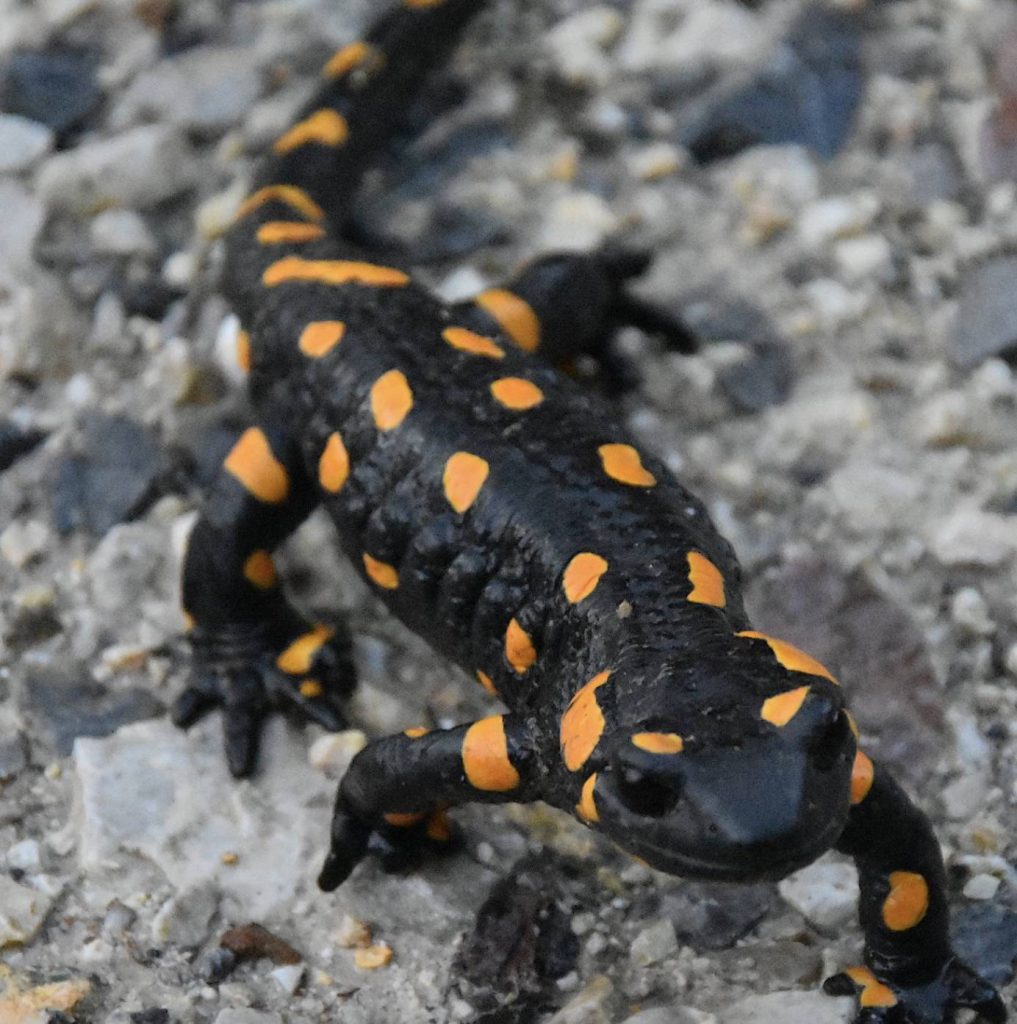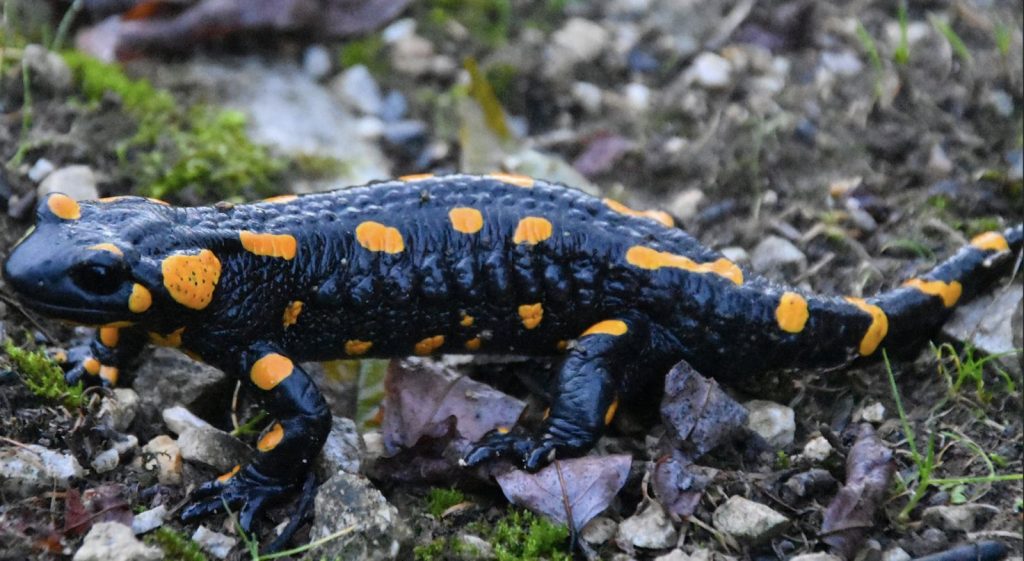This astonishing little creature I found walking in here in an Austrian forest, may look a bit frightening but is in fact harmless to humans unless held for a prolonged period of time. However, this does not mean that one should touch them, as they are wild animals and can be damaged or scarred by interaction with humans.
Fire Salamander, also known as Salamandra salamandra, is a species of black amphibian with yellow spots and stripes randomly spread out over their bodies.
Fire salamanders are currently in Least Concern, according to the IUCN. However, they depend on small springs in order to reproduce. These springs are being destroyed in great numbers every year, by construction, deforestation, farming… This habitat loss is putting them at risk of becoming endangered.
A fire salamander can be up to acc 20 cm long, usually, weighs between 20 and 45 g and can live up to 20 years! They have an annual reproduction cycle, with larvae found between February and October, with between 30 and 60 larvae each year. The larval period can vary between a few months to more than a year!
Fire salamanders like to live in mixed broadleaf forests, usually containing beech. They range from the east Mediterranean to the Atlantic coast of France, including countries such as Austria, Italy, and Spain. Fire salamander mostly feeds on slugs and arachnids, such as ticks.
Although nocturnal, fire salamanders sometimes come out at day depending on air temperature, humidity, and flow. Usually, only exciting when humidity is over 85%.
Finally, Fire Salamanders have a venomous dermal secretion and use it as protection against parasites and predators. They spray the venom from glands behind their eyes. However, it is not harmful or deadly for humans. Fire Salamanders also release white highly toxic liquid from their skin, which can cause skin irritation.


Nika Strok Underwood
